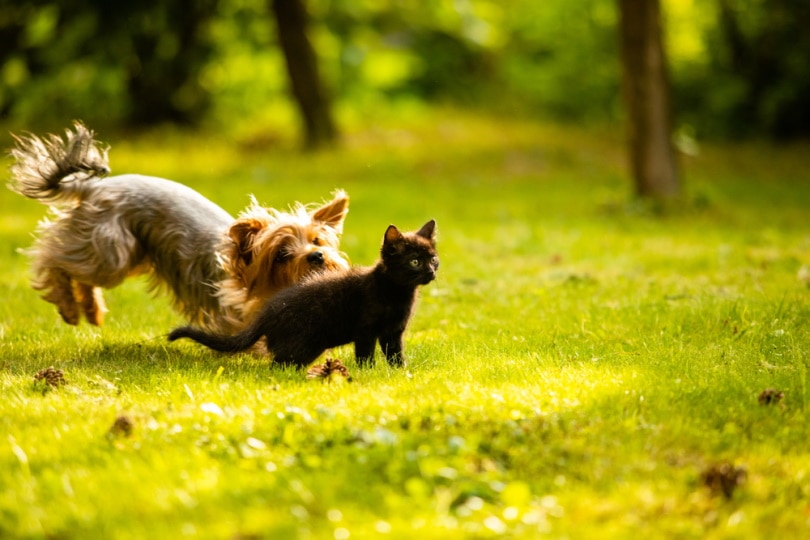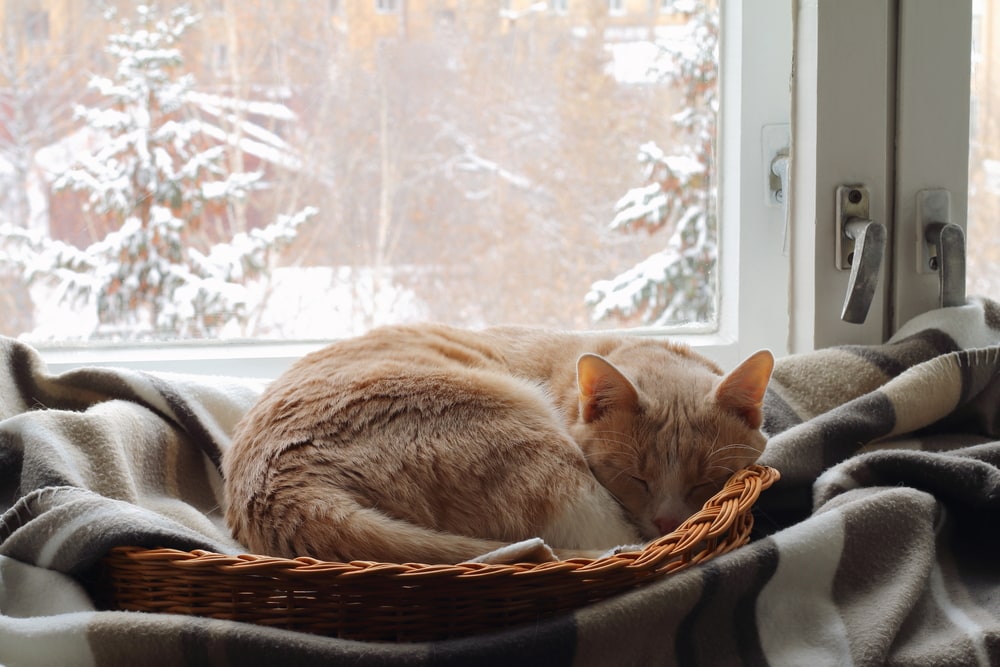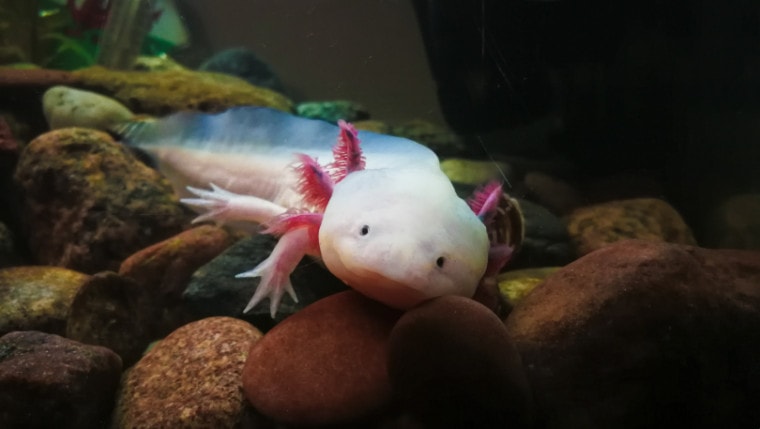
Looking like little Pokemon creatures, axolotls are aquatic salamanders that are becoming more and more popular as pets and research subjects. Though more people are keeping them as aquatic pets, there’s a lot you may not know about this quirky creature.
Here are 13 fascinating facts about axolotls.
The 13 Axolotl Facts
1. Axolotls Always Look Like Babies
Axolotls are neotenic, which means they reach sexual maturity without losing their “baby” features, or in this case, the larval features like feathery external gills. They also stay aquatic, unlike similar amphibians like the salamander. Even in adulthood, they rely on suction to consume food.
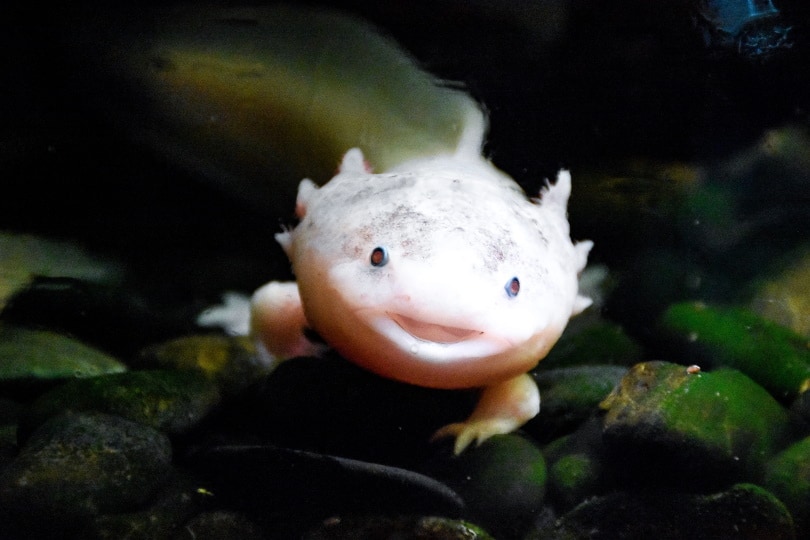
2. Axolotls Are Only Native to One Area
Though the axolotl had a wider distribution in the past, they’re currently only found in Lake Xochimilco in southern Mexico City. Both the current lake and their past habitats have been reduced by human development, making them scarce in the wild.
3. Axolotls Come in Many Colors
Axolotls come in brown or black with specks of gold or olive green in the wild. They can adjust their colors to blend in with their surroundings as well. The variety of colors that occur in the pet trade, such as albino and leucistic, are the result of captive breeding.
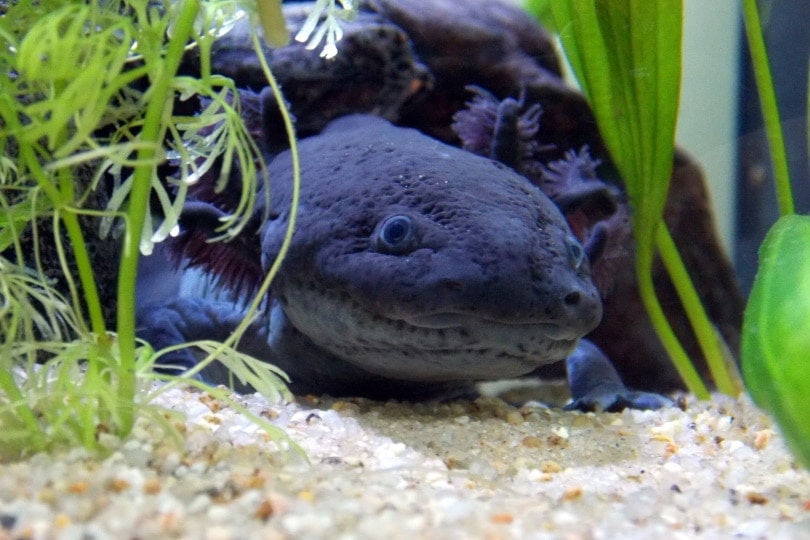
4. Axolotls Are Carnivores
Axolotls are carnivorous, consuming fish, worms, insects, and crustaceans. They’ll eat animals that are dead or alive, often consuming brine shrimp, earthworms, or fish pellets in captivity. Young axolotls have been known to bite off the appendages of family members if food is scarce, which brings us to the next fact …
5. Axolotls Do a Mating Dance
Axolotls reach sexual maturity around six months, which is when they start seeking out a mate. Both the male and female rub their cloacal areas together, which creates a dance-like movement.

6. Axolotls Have a Massive Genome
With 32 billion DNA bases and a genome that’s 10 times that of a human, scientists have a challenge in sequencing axolotl DNA. It’s an important endeavor, however, since researchers are looking for clues into the axolotl’s regenerative ability to apply to human medicine.
7. Axolotls Can Regenerate Body Parts
Regenerating limbs or tails is common in many species of amphibians and fish, though axolotls take it a step further with the ability to regenerate the spinal cord, skin, ovaries, lung tissue, jaws, and some of the heart or brain. They can also regenerate throughout their lives.
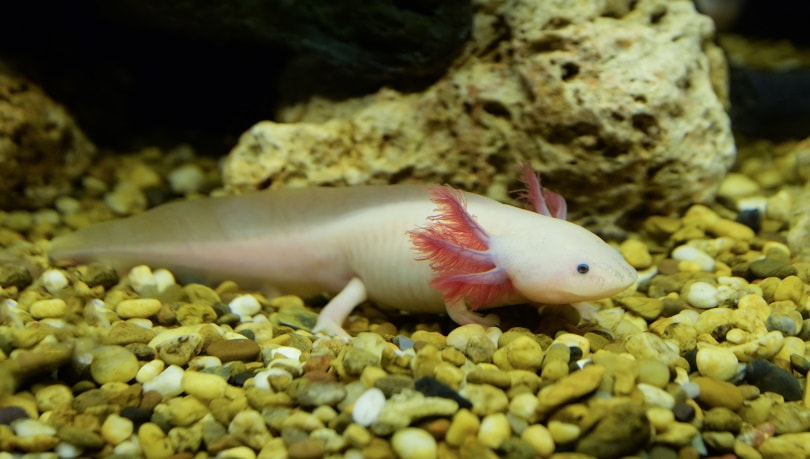
8. “Axolotl” Is the Name of an Aztec God
The axolotl is named for the Aztec god Xolotl, who is the god of games. According to legend, he could turn himself into an axolotl to escape his enemies.
9. Axolotls Can Live on Land
Axolotls have rudimentary lungs but keep their gills for their entire lives and breath through them and, to a lesser extent, their skin. If they spend time in shallow water, however, they can absorb their gills and will develop the ability to use their lungs on land.

10. Axolotls Used to Be on the Menu
Though it’s no longer legal, axolotls used to be eaten by the natives of Xochimilco. They are edible, and some restaurants still serve them. According to those who have eaten them, they are crunchy and have a flavor like white fish.
11. Females Lay Up to 1,000 Eggs
Axolotls only breed once a year in the wild, which takes place around February. The females can lay up to 1,000 eggs, though it’s usually more like 300. The eggs come one after another, and then they’re attached to bedding or rocks to keep them safe from predators. They hatch after 10 days, but the mother plays no role in their care at that point.
12. The Name Is Often Mispronounced
Unsurprisingly, a lot of people struggle to pronounce “axolotl” correctly. It’s an Aztec word and should be pronounced “ak-suh-lo-tl.”
13. Axolotls Are Critically Endangered
Because axolotls are only found in one lake region in Mexico, it’s a critically endangered species in the wild. Their habitat is only four square miles, which is declining due to pollution, human development, and invasive species like carp. Axolotls are important in the pet trade and for scientific research, so they will survive in captivity, but they may go extinct in the wild.


Are Axolotls Good Pets?
With their whimsical appearance and “smiling” mouth, axolotls are a popular pet among aquarists. Despite this cute look, they aren’t very exciting pets, can’t be handled, and require specific care, so it’s important for any potential pet owner to do research before acquiring one.
Unfortunately, the demand for axolotls as pets has led to many being illegally taken from the wild and sold in exotic pet markets, despite successful captive breeding. They can live for a decade or more with proper care, so conservationists worry about pet owners losing interest and either neglecting their pets or dumping them in local waterways where they can devastate the native species.
While axolotls may be critically endangered in the wild, captive breeding for the pet trade is not considered a conservation measure. The captive-bred populations are seriously inbred, which can leave them vulnerable to disease and unsuitable for breeding with wild axolotls. Captive colonies can also introduce genetic conditions to the entire species—captive and wild.
Conclusion
There you have it—13 fascinating facts about axolotls! From their mating dances to their superhero ability to regrow most body parts, there’s no doubt that the axolotl is an amazing and unique creature. In the future, the axolotl may even play a role in human healthcare.
You might also like:
Featured Image Credit: ArnPas, Shutterstock



